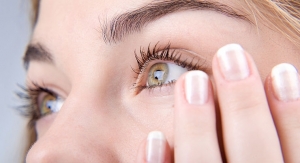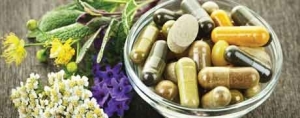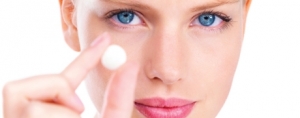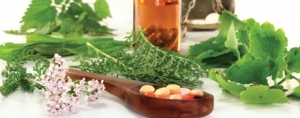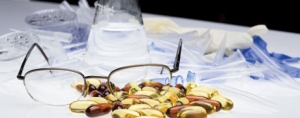Joerg Gruenwald11.01.06
Beauty from the Inside – Out
Claims versus science in cosmeceuticals and beauty foods.
By Joerg Gruenwald
Cosmeceuticals represent one of the strongest growing segments in the cosmetic and nutraceutical markets. The segment is diverse, ranging from anti-aging products to hair care, slimming and body shaping products, all claiming to enhance beauty from the inside. Other market segments riding the beauty wave and containing ingredients with similar claims are foods and functional foods. All of these products typically contain natural or herbal ingredients. It has become common usage to call the products with these claims “beauty foods,” be they cosmeceuticals, supplements, foods or functional foods.
Products considered beauty foods also include common food ingredients that are now entering consumers’ awareness as not only being healthy, but also as having a beneficial impact on overall appearance. The old adage “you are what you eat” still holds true, and now it is also becoming more obvious for the consumer that good health clearly adds to beauty.
Beauty foods, in contrast to cosmetics and topically used cosmeceuticals, claim to improve appearance from within the body. Claimed effects are, among others, wrinkle reduction and general improvement of facial skin structure, cellulite reduction and body shaping through slimming, and improved structure of nails and hair.
The diversity of beauty foods, sometimes referred to as nutricosmetics, is enormous, and new products continue to flood the marketplace. The promise to grow more beautiful simply by eating—no dieting or exercising required—is a potent lure for consumers in Japan, America and Europe, which are currently the major markets. Besides, if you are going to eat that marshmallow anyway, why not eat one that contains collagen and claims to improve your appearance?
As always, it’s difficult for consumers to decide if a claim has any basis in fact, or if it is a pure marketing gimmick. In an effort to shed some light on the jungle of marketing slogans, we analyzed a variety of available natural or herbal beauty foods, their proposed actions, and the existing clinical evidence supporting possible claims.
Beauty Foods Product Review
Many beauty food products contain a combination of several ingredients. One of the oldest known beauty foods is “Merz Spezial Dragées” from Germany. This product was first brought to market in 1964, long before the term “beauty foods” was ever coined. It contains 14 active substances, among them amino acid N-acetyl-DL-methionine as a basis for keratin, beta-carotene (pro-vitamin A), iron-II-fumarate, biotin and B vitamins, as well as vitamins A, C and E.
The effectiveness of Merz Spezial Dragées in lending beauty to hair, nails, and skin has been proven during more than 40 years of usage by millions of consumers and by several clinical trials. In fact, in 2004, the positive effect of the product on capillary circulation was clinically proven and patented.
The Danish product Imedeen Time Perfection contains proteins and polysaccharides isolated from a deep sea fish in a composition that closely resembles that of skin. Other active ingredients include a complex based on natural lycopene, grape seed extract and vitamin C. The product’s effectiveness on skin elasticity, hydration, color, and overall quality was proven in a clinical trial with 144 women, using four skin quality measuring systems. Results showed more than 50% of the study participants experienced improved skin quality after using the product for 12 months.
Innéov Firmness is a product owned by the joint venture between Nestlé and L’Oréal, an innovative cooperation between a big food player and a big cosmetic player. The active components used in this product are lacto-lycopene, a lycopene with claimed higher bioavailability, isoflavones from soy, and vitamin C. The effectiveness of the product in increasing skin firmness was proven in a self-assessment test including 305 women, and in in-vitro tests proving increased production of collagen fibers and increased cell reproduction rates.
Inversion Femme is a Belgian product with two formulations, one to be taken in the morning and one in the evening. The “morning capsule” contains green tea extract, borage seed oil, vitamin C, zinc and selenium, while the “evening capsule” contains grape extract, shark cartilage, vitamins B2, B5, B6, and B8, copper, iron, and fish oil. The formulation and timing of administration is geared toward optimum bioavailability and efficacy of the proposed action—promoting hair and nail growth, improving skin firmness, reducing wrinkles, improving skin hydration, and reducing body fat mass. Each proposed action was confirmed in a separate clinical trial, each over a period of eight weeks.
The branded ingredient Tonalin, which is now owned by Cognis, contains conjugated linoleic acid or CLA. It has been proven in randomized, double-blind, placebo-controlled studies to influence fat metabolism toward a reduction of stored fat. The product is used in food products and supplements for weight loss and cellulite reduction purposes.
In France, a combination pack produced by Lierac contains a cellulite gel with caffeine and licorice extracts, plus two supplements for reduction of fat and water in the body, mainly based on CLA and green tea extract. This is certainly a promising concept because it combines beauty from the inside with outside application.
Other strong players include Oenobiol (France) and Dr. Perricone (U.S.), which both offer a whole line of beauty supplements.
Another interesting product, Norélift, “the first anti-wrinkle product you can savor,” is a functional jam marketed in France and intended to be used in conjunction with Noreva’s Norélift anti-aging cream and capsules range. Here, the claim is that one spoonful a day for a month will have a visible effect on the skin when used alongside these products. The jam contains essential fatty acids (EFAs), antioxidants, lycopene, noreline, and vitamins E and C.
V&T, a brand by Coca-Cola sold exclusively in Spain, is a functional beverage with natural fruit and green tea extract, claiming very clearly antioxidant properties—“protects from cellular aging and is important for a healthy lifestyle,” according to product labeling.
Japanese company Eiwa Confectionery is currently marketing a marshmallow containing collagen and hopes to take on the European market with this “all gain, no pain” product. The company claims that eating the functional marshmallows is as effective for skin rejuvenation as getting a collagen injection. There is even a warning that eating too much of them may cause allergic reactions, complete with a recommended daily intake of no more than half a packet. Of course, it is questionable if ingesting collagen in this manner will have any effect on the skin at all, no matter how many functional marshmallows one eats.
Parmalat has introduced a dairy range called Jeunesse, which includes yogurts, skimmed milk and fruit desserts, all enriched with coenzyme Q10 (CoQ10) and vitamin E. The products claim to contain antioxidants and “nourish your youth.”
Borba Skin Balance Water contains “pioneering multi-beneficial actives” that, upon closer inspection, turn out to be vitamins C and A, vitamin A palmitate and a “selenium AA complex” (sic). Mention is also made of scientific proof of slowing down signs of aging by 16%. The cited clinical study, conducted by an experienced technician and evaluated by a dermatologist, subjectively assessed the efficacy of Skin Balance Water to improve the appearance of the skin with respect to dryness, roughness, fine lines, elasticity/firmness/resiliency, skin clarity and subject perception of dry condition.
On the Horizon
In general, most cosmeceuticals and beauty foods contain low levels of active components, which in some countries, especially in Europe, is necessary since they are regulated as food or dietary supplements and maximum dosages are fixed on a much lower level, with the exception of the U.S. These types of products often boast exorbitant claims without backing them up with proof of any kind. Nevertheless, there is encouraging scientific evidence for the effectiveness of some products, even if the methodology often leaves room for improvement.
Overall this segment represents enormous potential, especially considering the fact that some countries in Europe have been slow to jump on the “be healthy to be beautiful” bandwagon. With convincing science in the form of well-controlled clinical trials, and good products, this may soon change.NW




